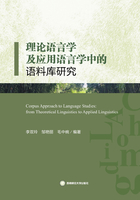
The Image of “donkey”in Goldblatt's Translation: A Data-Driven Study of the Collocational Behaviour of donkey(s)
Southwestern University of Finance and Economics
Abstract:This article explores the image of “donkey”in Goldblatt's translation by examining the collocational behaviour of donkey and donkeys. Howard Goldblatt is a well-known American Sinologist and the most productive translator of Chinese literature. The current study analyses Goldblatt's translation of Mo Yan's two representative novels, Red Sorghum and The Republic of Wine. The results suggest that the images of “donkey”in the translated version are not exactly the same as what Mo Yan describes in his works. “Donkey”embodies more contextual and figurative meaning in Mo's novels, while the lexical meaning of “donkey”significantly broadens in Goldblatt's translations. It was found that factors such as the cultural differences for “donkey”between China and the west and the subjectivity of a translator might have played a role. These discussions provide further understandings into Goldblatt's translation strategies, his translator style and the images of “donkey”in the west.
Keywords:Howard Goldblatt; “donkey”; Data-Driven Analysis
1. Introduction
Howard Goldblatt(1939-)started Chinese literature translation in 1978. Over the past decades, he has translated over 60 novels, short stories and poetry anthologies of more than 30 famous Chinese writers, most of which are contemporary writers, such as Xiao Hong, Mo Yan, Su Tong, Lao She, Ba Jin, Li Ang, A Lai, Liu Zhenyun, Jia Pingwa, Jiang Rong and Wang Shuo. A number of researchers (e. g. Wen, Wang & Lai,2007)have paid attention to Goldblatt's translation thoughts that translation is a kind of “betrayal”, rewriting and cross-cultural activity. Many more scholars have focused on Goldblatt's translation style and his contribution for “Chinese literature walking out”. Zhang (2005)suggested that Goldblatt's translation well reached the symbolic meaning of the original language without being confined by the literal equivalence.Moreover, Liu and Xu (2014)clarified some prejudices for his translation strategies such as abridgment, adaptation and whole compilation. Besides, Hu (2010)believed that a sinologist mode of translation exampled by Goldblatt or domestication instructed Chinese literature translation.
Despite of those insights, few researches have focused on Goldblatt's translation associated with literary images, not mention to probing the specific animal image in his translation. Though Zhou and Zhou (2017)studied Goldblatt's translation of “dog”based on a translation corpus of the “folk language”of the ten novels which were written by Mo Yan, analysing the origins behind some prejudice for “dog”, they still paid little attention to the lexical features of the translation texts. Taking the Chinese“donkey”for an example, sometimes Goldblatt omitted it, or sometimes he translated it into“mule”or even“animal”. Why did he translate like that? Is there any possibility for a probe of its image by analysing how donkey(s)collocates in the text? With those doubts, this paper studies the collocational behaviour of donkey(s)in Goldblatt's translation in order to somehow find out the image of “donkey”. More specifically, the research pays attention to the collocational use of donkey and donkeys in the English versions of two novels of Mo Yan:Red Sorghum(1994)and The Republic of Wine(2012). The study may help further studies of Goldblatt's translator style, the deep mechanism for cultural transmission and the future Chinese literature translation of literary images.